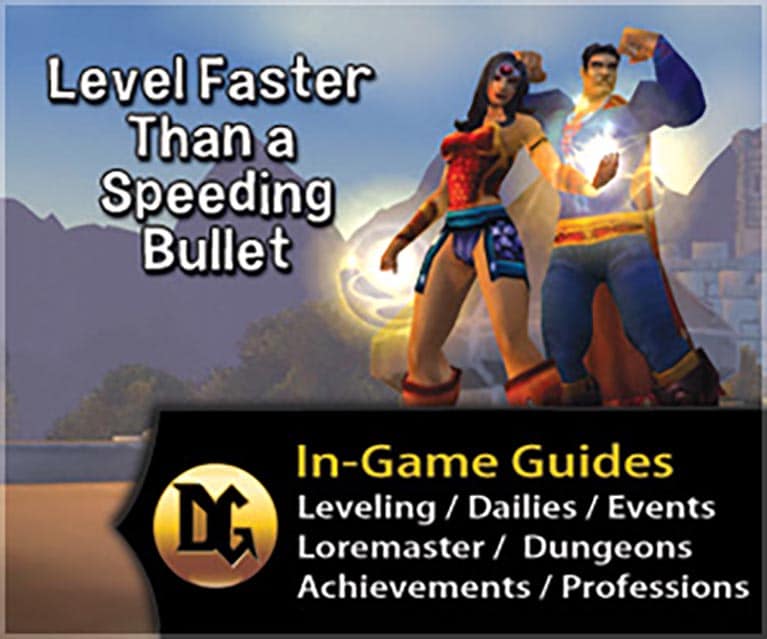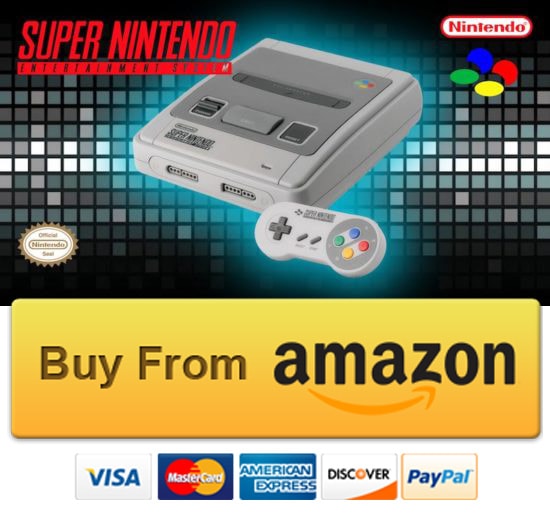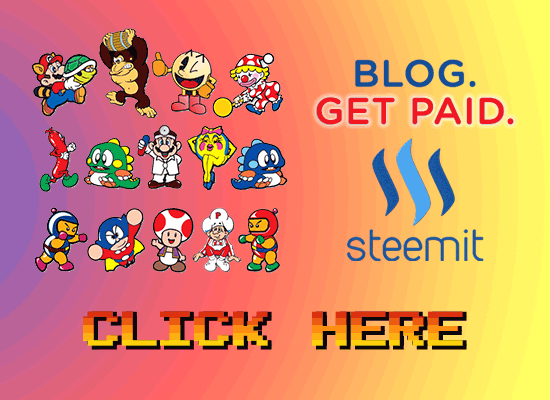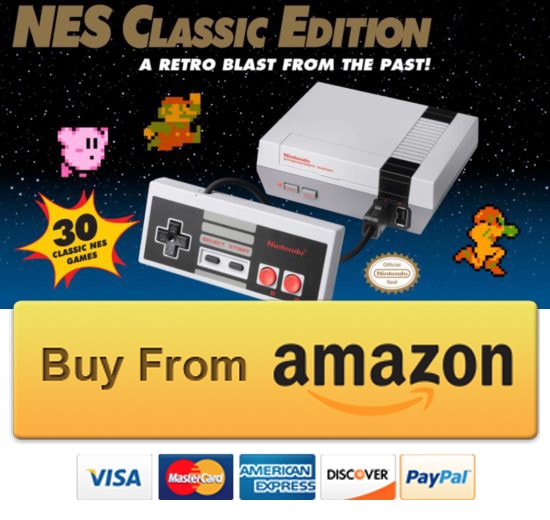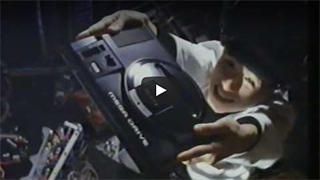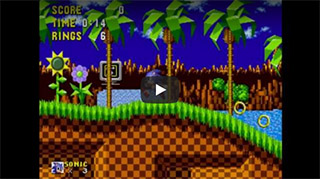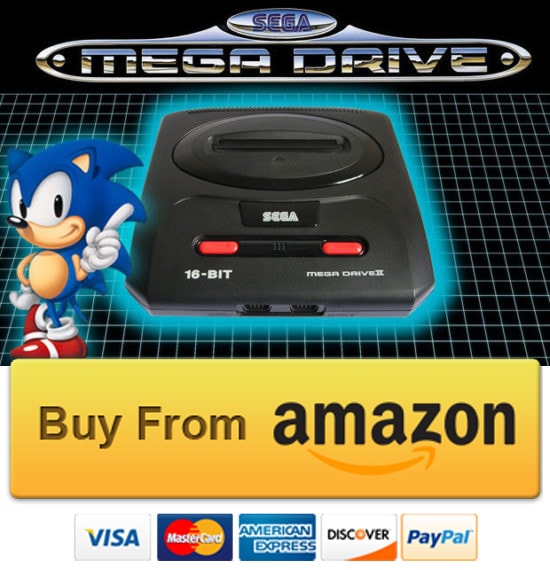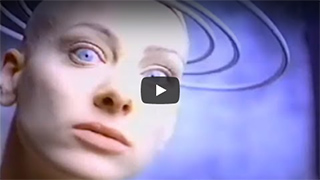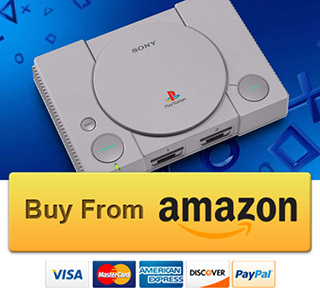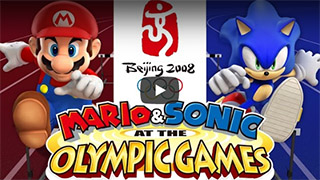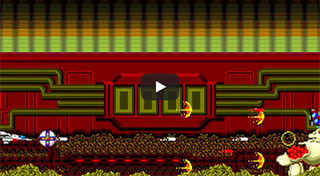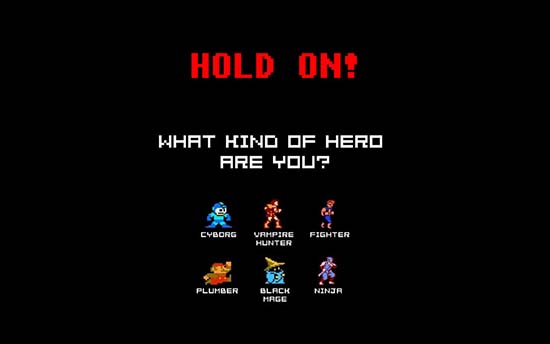What happened to SEGA Consoles?
What happened to SEGA consoles? New generation of video game players may even not know that Sega was once producing home consoles. But some of us remember these days as they were just yesterday. But what exactly happened with Sega? Once, one of the key players, a strong competitor to almighty Nintendo, now disappeared into the dust. I decided to take a journey into the past and find out.
Article by: Retroconsole XYZ
Table of Content
I Beginning of Sega
The History of Sega and Sega Consoles
Sega Enters the Home Console Market
Third Generation: Sega SG-1000
II Rise of Sega
Third Generation: Sega Master System
Fourth Generation: Genesis
Genesis Does What Nintendon’t
New Image by Tom Kalinske
Sonic the Hedgehog
Fourth Generation: Sega CD
III Downhill of Sega
Fifth Generation: Challenges Arise
Fifth Generation: Missed Opportunities
Fifth Generation: Failure of Sega Saturn
IV Last Stand of Sega
Sixth Generation: Sega Dreamcast
V No More Consoles
Shift to Third-Party Software
Sega 2005-2013
Mario and Sonic at the Olympic Games
Sega Arcades and Theme Park in Dubai
Sega Focuses on Digital Market
2016: Sega Acquires Technosoft
VI Comeback
Comeback – Mega Drive Mini Released
The History of Sega and Sega Consoles
Sega started as a small company in Honolulu, Hawaii and was first called Service Games. It was founded in 1940. Originally it manufactured slot machines and jukeboxes for the American Military. In 1951 company moved to Tokyo, Japan. In Japan they crossed paths with another American company called Rosen Enterprises. This company at the time produced Photo Booths that printed pictures for work and travel id-s. In time Rosen Enterprises entered the business of Electro Mechanical arcade games. In 1964, Service Games and Rosen Enterprises merged together and formed well known Sega Enterprises. From 1966 Sega started to produce their own original Arcade Machines. Periscope, Rifle and Helicopter were the first highly popular Electro Mechanical arcade games by Sega, but it was just the beginning.
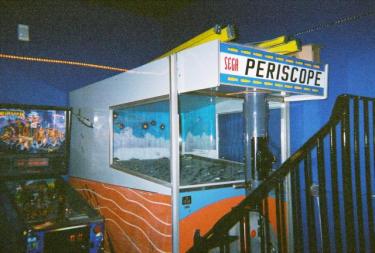
In 1970’s, Pinball Machines and Electro Mechanical Machines were replaced by Microprocessor based Arcade Machines. Another expansion to the company was a purchase of distribution company headed by Hayao Nakayama, who eventually became a key player and the CEO of the company. In 1976, Sega changed their logo to the one we all know today.
Sega became well known for their high quality Arcade Games like Zaxxon, Turbo, Buck Rogers and was one of the key players in the Arcade industry.
Sega enters the home console market
In the beginning of 1980’s, there was little to no regulation in video game industry. Everyone wanted to cash in quickly and tried to produce their own games and home consoles. Unfortunately, due to over saturation and amount of low quality products, home console market had a huge crash in 1983. Whole industry was almost killed off. Despite the mess, two companies in Japan were brainstorming on how they could enter the market. Oddly enough, Nintendo and Sega released their consoles on the exact same day, July 15th, 1983.
Sega Consoles: Third Generation
Sega SG-1000
Developed in response to a downturn in arcades in 1982, the SG-1000 was created on the advice of Hayao Nakayama. It was Sega’s first home console. Sega SG-1000 was only released in Japan (re-branded versions however, were released in Australia, New Zealand, Italy and Spain). Unfortunately, the SG-1000 home console was never a real competitor to Nintendo’s Famicom. Nintendo just had a better console, better games and strategy. Some sources say that Nintendo even grabbed up to 90% of the market share.

Sega released another console, the SG-1000 II, on July 31, 1984. It featured hardware tweaks from the original model, including detachable controllers and the ability to play Sega Card games. The lead designer of consumer hardware development at Sega, Hideki Sato, disliked the original cartridges. Sato later remarked that his proudest achievement of the SG-1000 era was replacing original cartridges with the cheerier, pocket-sized Sega Cards.
“The challenge will always be there.”
Sega Master System / Mark III
Sega continued to push. Already in 1985, they released another console, Sega Mark III in Japan. A re-branded and widely known version of it was released as Sega Master System in North America in 1986. Just a year later, also in Europe. But even this was not enough to fight with Nintendo.
In order to avoid any drop in quality and prevent another crash like in 1983, Nintendo had signed an iron-grip contract. A Contract that forced game developers to only work for them. If developers wanted to make games for the NES, it could be only for the NES. In Nintendo’s eyes, this was quality control. For many others, it was oppression.
This did not prevent Sega from trying to make a most of what they had.

Master System was released with Hang On and Safari Hunt. From the technical stand point, Master System was superior to the Nntendo’s Entertainment System. However, thanks to Nintendo’s super contract, Sega managed to get only two third party developers involved – Activision and Parker Brothers. Therefore. most of the games were ports of Sega’s own arcade games, making Master System essentially an arcade system. A fun fact that there was no Start/Pause button on the controller, it was located on the console.
Master system provided some quality titles to remember such as Fantasy Zone and After Burner. Sega also pushed to make their own mascot. One that could compete toe to toe with Mario. The Answer was Alex the Kidd. Even thought the game was kindly received, it never became what Mario was.
Sega Consoles: Fourth Generation
Sega realized that they had to throw their biggest punch yet. They needed to create a console that would be way better than any other console available on the market. Most of all, better than Nintendo’s Entertainment System. And their answer was the Mega Drive. Or as it is called in America, Sega Genesis.
Sega Mega Drive / Sega Genesis
The Sega Genesis, known as the Mega Drive in regions outside of North America, is a 16-bit home video game console. The console was released as the Mega Drive in Japan in 1988, followed by North America as the Genesis in 1989. Hardware was adapted from Sega’s System 16 arcade board, centered on a Motorola 68000 processor as a primary CPU and a Zilog Z80 as a secondary processor. The system supports a library of more than 900 games.
Genesis was a 16-bit powerhouse. It had better graphics and sounds than any other console. Nonetheless, it had a rough beginning. It was released around the same time than Super Mario Bros. 3 and therefore, it sold only 400.000 units the first year. However, when the console arrived to America in 1989, Sega already sold more than a million units.

“GENESIS DOES WHAT NINTENDON’T”
In 1989, Michael Katz joined Sega of America. He’s team came up with the infamous line “Genesis does what Nintendon’t”. He also pushed hard to recruit celebrities and athletes to create games about them. Joe Montana Football and Michael Jackson Moonwalker are only few of many examples. But even then, the Genesis was not as successful as Sega had hoped. They decided to make some changes and replaced Katz with Tom Kalinske.
Sega Consoles and new Image by Tom Kalinske
Tom had a lot of experience in the toy industry. Previously, he had helped to revitalize the Hot Wheels, Barbie franchise and launched the Masters of the Universe. He understood perfectly what made a toy line successful. And that was exactly what Sega needed.
Tom had a 4-point plan to change things up:
- 1. Include Sonic as the prepackaged game with the console.
- 2. Lower the price of the console from 189$ to 149$
- 3. Rearrange the direction in advertising to define Sega as cool
- 4. Produce more games for the western audience
Sonic the Hedgehog
Sonic the Hedgehog was a bold answer to Nintendo’s Mario and finally helped to boost the sales of the console. However, in the development stage there was no Sonic. Main character of the game was going to be Mr. Needlemouse, who had a guitar and hot human girlfriend. This was not going to work for the western audience. People from Tom’s team convinced the development team to change things up a bit and Sonic was born.
The franchise of Sonic centers on a series of speed-based platform games. The protagonist of the series is an anthropomorphic blue hedgehog named Sonic, whose peaceful life is often interrupted by the series’ main antagonist, Doctor Eggman. Typically, Sonic—usually along with some of his friends, such as Tails, Amy, and Knuckles—must stop Eggman and foil any plans of world domination.
Tom and his team was able to convince Walmart to sell Genesis at their store. They also managed to get other third party developers involved.
While Kalinske was CEO of Sega of America the company grew from $72 million to more than $1.5 billion and the market value of Sega grew from less than $2 billion to more than $5 billion. His market strategies have been cited as the key factor in breaking Nintendo’s dominance of the video game industry. The Genesis and Game Gear systems were highly successful during this time.
But these good and sweet times for Sega were not to last long and rough times were on the horizon.
Sega Genesis Add-on: Sega CD
Sega always wanted to be experimental and try new things that others would not dare to. A rising technology on the market at the time was the CD. Sega wanted to join in and they introduced an add-on to the Genesis console: Sega CD. It was different. It allowed player to play a movie. Games that used full-motion video for its primary gameplay, like Sewer Shark and Night Trap did well at first but it was a dying trend. Sega quickly abandoned the project and started to work on a new console.
Fifth Generation of Sega Consoles
For the last few years, Sega of Japan had let Sega of America to do what needed. But things were changing in Sega. Ironically, one of the biggest challenges for Sega came from the inside. It was the communication between Sega of Japan and Sega of America. They rarely saw each other eye to eye and often disagreed on things. Sega of Japan had the most power though and made decisions.
Sega of Japan was constructing the new hardware while Sega of America was waiting the result. Unfortunately, the final product was a complicated device. It had two CPU-s, two graphic chips and other processors. In other words, it was very difficult to work with and a huge challenge for developers.
Missed opportunities by Sega
Tom Kalinske tried to find an alternative to Saturn. Eventually, he even found one, made by Silicon Graphics. That company had a chip set ideal for console. It was better in speed, graphics and audio but Sega of Japan did not want to listen.
The chip set Sega had turned down was good enough for Nintendo and eventually formed the infamous Nintendo 64. Read more about it: Development of Nintendo 64.
Actually, there was even another option on table. At that time, Sony was looking for a partner to work with. First they went to Nintendo but were turned down. Nintendo was afraid of this option because they did not want to lose any control of the company. Then Sony went to Sega. The idea was to manufacture the hardware together, and then manufacture games for it individually. Each to collect money then individually made. Tom liked the idea, because Sega was a lot more experienced in software. He knew that they could produce some serious hits for the system and make some serious profit. But, Sega of Japan did not like the idea and alliance was not formed. Eventually, Sony manufactured the console alone. It was the Playstation.
Sega Saturn
The Sega Saturn is a 32-bit fifth-generation home video game console developed by Sega and released on November 22, 1994 in Japan, May 11, 1995 in North America, and July 8, 1995 in Europe. The successor to the successful Sega Genesis, the Saturn has a dual-CPU architecture and eight processors. Its games are in CD-ROM format, and its game library contains several arcade ports as well as original games.
In 1996, Kalinse stepped down from his position. After all, Sega had turned down two pieces of hardware he fought for. Now Sega also lost one of their most valuable players and was stuck with Saturn. Also, while moving on with Saturn, Sega decided to cut off Genesis, despite it had some life left to it. They also cut of 32x, a cheaper 32-bit upgrade for Genesis owners that SEGA had recently introduced. Only a year after it was released.
The Saturn was launched in 1995, but it had a short life spin. It was discontinued already 3 years later, 1998 in Europe and America. It got a little longer life in Japan and was discontinued in 2000. People in Sega just did not believe in it. New president of Sega of America, Bernard Stolar saw Saturn as a lost cause and was already looking into the future.
“Saturn is not our future” – Bernard Stolar at E3 in 1997
Many of the fans were upset and felt betrayed by Sega. But Sega was too busy working already with their next console.
Sixth Generation of Sega Consoles
In 1999, Sega Dreamcast was officially launched in America and it was massive hit. It had 18 launch titles to pick from and broke the record for the company and gaming industry. Once again, good times were not to last.
Sega Dreamcast
Dreamcast was the first in the sixth generation of video game consoles, preceding Sony’s PlayStation 2, Nintendo’s GameCube and Microsoft’s Xbox. In contrast to the expensive hardware of the unsuccessful Sega Saturn, the Dreamcast was designed to reduce costs with “off-the-shelf” components, including a Hitachi SH-4 CPU and an NEC PowerVR2 GPU.
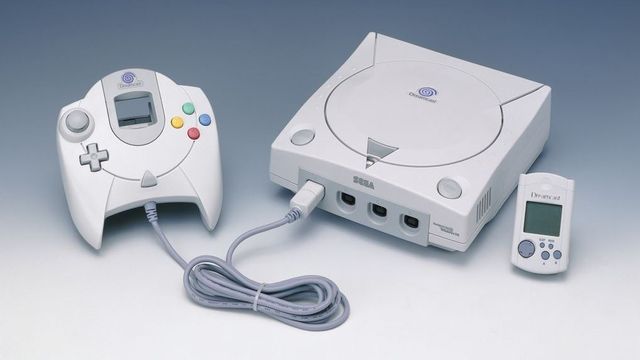
Unfortunately, just a year later, Playstation 2 was released. This competition was just too much for the Dreamcast to handle.
No more Sega Consoles
This was the final blow for the Sega Consoles. Sega had fallen from the grace and could no longer compete in the console war. Nakayama stepped down from his position and new leadership led by Isao Okawa decided to only provide software in the gaming industry.
In 2001, Sega announced to the world that they will no longer produce consoles. However, Sega produced games for Dreamcast until 2007.
Shift to third-party software development
On January 31, 2001, Sega of America officially announced they were becoming a third-party software publisher. By March 31, 2002, Sega had five consecutive fiscal years of net losses. To help with Sega’s debt, CSK founder Isao Okawa, before his death in 2001, gave the company a $692 million private donation. He also talked to Microsoft about a sale or merger with their Xbox division, but those talks failed. In addition, discussions also took place with Namco, Bandai and Electronic Arts. Source
In August 2003, Sammy, one of the biggest pachinko and pachislot manufacturing companies, bought the outstanding 22% of shares that CSK had, and Sammy chairman Hajime Satomi became CEO of Sega. During mid-2004, Sammy bought a controlling share in Sega Corporation at a cost of $1.1 billion. New company, Sega Sammy Holdings, an entertainment conglomerate was formed. Since then, Sega and Sammy became subsidiaries of the aforementioned holding company, with both companies operating independently, while the executive departments merged.

Continued expansion and acquisitions (2005–2013)
In 2005, Sega sold its major western studio Visual Concepts to Take-Two Interactive. Also, Sega purchased UK-based developer Creative Assembly, known for its Total War series. In the same year, the Sega Racing Studio was also formed by former Codemasters employees. In 2006, Sega Europe purchased Sports Interactive, known for its Football Manager series. Sega of America purchased Secret Level in 2006, which was renamed to Sega Studio San Francisco in 2008. In early 2008, Sega announced that they would re-establish an Australian presence, as a subsidiary of Sega of Europe, with a development studio branded as Sega Studio Australia. In the same year, Sega launched a subscription based flash website called “PlaySEGA” which played emulated versions of Sega Genesis as well original web-based flash games. But, it was subsequently shut down due to low subscription numbers.

In 2013, following THQ’s bankruptcy, Sega bought Relic Entertainment, known for its Company of Heroes series.
Sega has also collaborated with many western studios such as Bizarre Creations, Backbone Entertainment, Monolith, Sumo Digital, Kuju Entertainment, Obsidian Entertainment and Gearbox Software. In 2008, Sega announced the closure of Sega Racing Studio, although the studio was later acquired by Codemasters. Closures of Sega Studio San Francisco and Sega Studio Australia followed in 2010 and 2012, respectively.
Mario and Sonic at the Olympic Games
The Sonic the Hedgehog series continued to be internationally recognized, having sold 150 million in total. However, the critical reception of games in the series has been mixed. In 2007, Sega and Nintendo teamed up using Sega’s acquired Olympic Games license, to create the Mario and Sonic at the Olympic Games series, which has sold over 20 million in total.
In Japan, Sega found a success with the Yakuza and Hatsune Miku: Project DIVA series of games. Additionally, they distribute games from smaller Japanese game developers and localizations of western games.
In 2013, Index Corporation was purchased by Sega Sammy after going bankrupt. After the buyout, Sega implemented a corporate spin-off with Index, and re-branding the video game assets of the company as Atlus. Atlus is known for its Megami Tensei and Persona series of role-playing games.
Sega Arcades and Theme Park in Dubai
For amusement arcades, Sega’s most successful games continued to be based on network and card systems. Games of this type include Sangokushi Taisen and Border Break. Arcade machine sales incurred higher profits than their console, portable, and PC games on a year-to-year basis until 2010s.
In 2004, the GameWorks chain of arcades became owned by Sega, until the chain was sold off in 2011. Sega Republic, an indoor theme park in Dubai, was opened to the public in 2009. Which unfortunately, has been closed down by now.

In 2010, Sega began providing the 3D imaging for Hatsune Miku’s holographic concerts. In 2013, in co-operation with BBC Earth, they opened the first interactive nature simulation museum, Orbi Yokohama in Yokohama, Japan.
Sega focuses on digital market
Packaged game sales started to decline domestically and outside Japan in the 2010s. Sega began layoffs and reduction of their Western businesses. They shut down five offices based in Europe and Australia on July 1, 2012. Sega did it in order to focus on the digital game market, such as PC and mobile devices.
In the mobile market, Sega released its first app on the iTunes Store with a version of Super Monkey Ball in 2008. Since then, the strategies for Asian and Western markets have become independent.

In the beggining of 2012, Sega also began acquiring studios for mobile development, with studios such as Hardlight, Three Rings Design, and Demiurge Studios becoming fully owned subsidiaries.
Sega established operational firms
In the 2010s, Sega established operational firms for each of their businesses, in order to streamline operations. In 2012, Sega established Sega Networks for its mobile games. However, it merged with Sega Corporation in 2015. Sega Games is structured as a “Consumer Online Company”, while Sega Networks focuses on developing games for mobile devices. Sega Entertainment was established for Sega’s amusement facility business and Sega Interactive was established for the arcade game business. These new divisions replaced the former Sega Corporation. New Sega Holdings consolidates all entertainment companies from the Sega Sammy Group.
Sega acquires Technosoft
In September 2016 at the Tokyo Game Show, Sega announced that they acquired the intellectual property and development rights to all the games developed and published by Technosoft. Factors that influenced the acquisition included the former Technosoft president stating that they did not want the Technosoft brand to desist. Handing over the intellectual properties to Sega was the only other option. Sega and Technosoft also had an established collaboration during the Genesis/Mega Drive era and so this pre-established relationship was also a factor when acquiring the brand rights to Technosoft games. Technosoft was best known for the Thunder Force franchise.
Sega consoles: Mega Drive Mini
After many years of waiting for the fans, 14th of April 2018, Sega announced the Mega Drive Mini. Due to upcoming 30th anniversary of Mega Drive / Genesis, Sega decided to release their own miniature “classic edition” version of the legendary 16-bit powerhouse. Mega Drive Mini was released on September 19, 2019. It was the first piece of hardware from Sega in years.
Mega Drive Mini is available at Amazon, price is around £55. Get it: Here
40+ games included in the packege (built-in):
1. Sonic the Hedgehog
2. Ecco the Dolphin
3. Castlevania: the new generation
4. Space Harrier 2
5. Shining force
6. Dr. Robotnik’s mean Bean machine
7. Toejam & Earl
8. Comix zone
9. Altered Beast
10. Gun Star heroes
11. Castle of illusion starring Mickey mouse
12. World of illusion starring Mickey mouse and Donald duck
13. hunder force 3
14. Super fantasy zone
15. Shinobi 3
16. Streets of Rage 2
17. Earthworm Jim
18. Sonic the Hedgehog 2
19. Probotector
20. Landstalker
21. Mega Man: the wily Wars
22. Street Fighter 2: special champion Edition
23. Ghouls ‘n Ghosts
24. Alex Kidd in the enchanted castle
25. Story of Thor
26. Golden Axe
27. Phantasy Star 4: the end of the millennium
28. Sonic the Hedgehog Spinball
29. Vectorman
30. Wonder Boy in Monster world
31. Tetris
32. Darius
33. Road Rash 2
34. Strider
35. Virtual Fighter 2
36. Alisia dragoon
37. Kid Chameleon
38. Monster world IV
39. Eternal Champions
40. Columns
41. Dynamite Headdy
42. Light Crusader

Hopefully there are even more Sega Consoles coming in the future.
Sega Dreamcast Mini
After the release of Sega Genesis Mini, the euphoria does not want to subside.
In October 2020, Sega Dreamcast Mini was teased in Famitsu Magazine. However, even if it is going to happen, the next mini console won’t release before 2022. Read the interview here: Famitsu Magazine
Composed by: retroconsole.xyz
Published: 2018

Last modified: 2021-03-03
Retroconsole xyz


